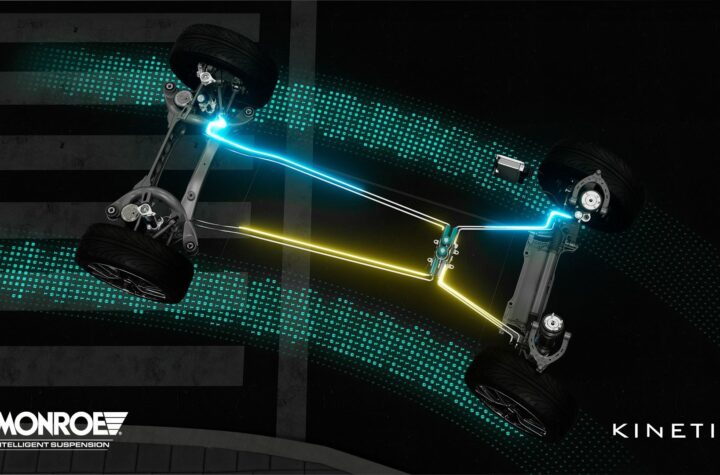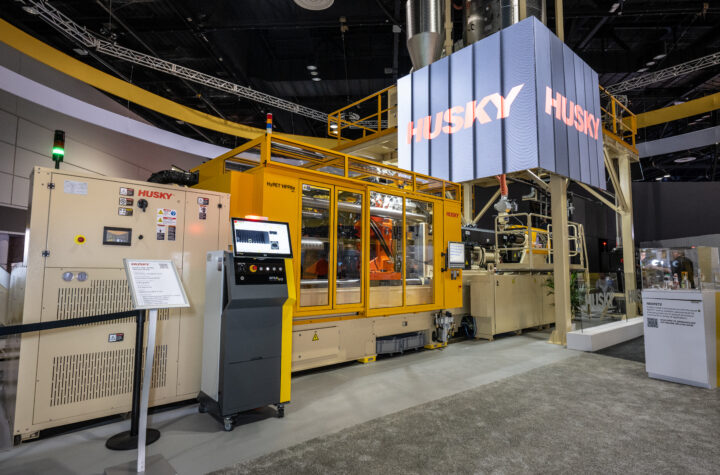Many industrial areas, as well as management paradigms, have been changed in the last, recent 30 years. Mass customisation, global value stream networks, accelerated innovation and product development cycles, new business models, new competitive factors. What are the influences of this development on the traditional discipline Industrial Engineering? What are the new requirements on Industrial Engineers in a flat world? Where are the new challenges and paradigms for Industrial Engineering?
The definition of Industrial Engineering says: „Industrial engineers design and improve work systems. These systems include people, equipment, materials, information, energy, and money“.
Industrial Engineering was developed in the 20th century in USA, Europe and Japan with some regional differences (Fig.1.). For the European school of Industrial Engineering, a strong technical background of mechanical engineering is typical, production engineering as well as a detailed focus on time measurement, cost and capacity calculation. For the implementation of IE methods in many European companies the acceptance of the trade unions is necessary (e.g. REFA is well-accepted by trade unions in Germany).
The typical REFA Industrial Engineer has the following qualification:
1. Basics of organisation development – Management practice and leadership pyschology, project management, personnel and work management (economy)
2. Costs and performance calculation, productivity controlling, business process development, total corporate management
3. Practical skills – project and engineering practice
The American school of Industrial Engineering has strong roots in statistical methods in quality, mathematics and optimisation methods of operation research, simulation but also the methods for work analysis and facilities layout planning. The base of the methods of the Japanese school of Industrial Engineering is the Toyota Production System oriented on waste elimination in the entire value stream. But also Japanese universities and companies incorporated simulation, mathematics and operation research programmes into the traditional „common sense“ Industrial Engineering methods. In the last issue of Harvard Business review, Toyota´s President Katsuaki Watanabe emphasizes the importance of combining continuous improvement (Kaizen) with radical innovations (Kakushin).
The globalisation wave in previous decades also influences Industrial Engineering. The American, European and Japanese schools of Industrial Engineering are integrated. The traditional focus of Industrial Engineering is on process analysis and improvement. The new orientation of this discipline has to accent more on customer orientation (not only waste elimination but more systematic customer value creation – innovation) and also the human aspect as the most important factor of flexibility, productivity and creativity.
The trend in industrial engineering is towards interdisciplinary courses where cross-speciality thinking is practised. Information technology is being increasingly integrated into IE courses and alongside the basic subjects that deal with hard facts, there are more and more classes looking at issues of teamwork, people motivation, communication skills, emotional intelligence and ethics.
|
|
USA |
Europe |
Japan |
|
Focus of Industrial Engineering |
Systems Optimisation, Statistical Process Control, Simulation, Bottleneck Management, Project Management |
Complex process optimisation, CIM, CAD/CAM, Flexible Automation, Systems Engineering, Digital Factory |
Waste Elimination, Simplification, Visualisation, Low Cost Automation, Common Sense, Lean, TPS, Kaizen |
|
Typical Role of the Industrial Engineer |
Systems Integrator, Optimiser, Process Improvement and re-engineering |
Production Process Optimisation, |
Lean Manager, Teacher, Trainer, |
|
Who are the Industrial Engineers? |
Industrial Engineering Department, Operation Management |
Department of Work and Process Organisation, Production Planning Department |
Hancho – Supervisor on Shop Floor, Every Employee from CEO to the Worker on the Line has some IE Skills |
|
Typical Concepts and Methods in Industrial Engineering |
Operation Research, Simulation, Six Sigma, TOC |
Work Measurement, Capacity Calculation, Layout Planning, Process Management |
Lean Thinking |
|
Leading Influence |
Institute of Industrial Engineers, Maynard´s, Lean Institute, MIT, Purdue University, Goldratt Institute |
REFA, MTM, Fraunhofer |
Toyota, Nissan, Omron |
|
Some IE Leaders |
Babbage Towne, Hasley, Gantt, Taylor, Gillbreth, Ford, Deming, Shewhart, Pritsker, White, Malcom |
Fayol, Mitrofanov, Altschuller, Schulmpeter, T.Baťa, J.Baťa, Warnecke |
Toyota, Suzaki, Imai, Takeda, Shingo, Ishikawa, Taguchi, Ohno, Monden |
Fig. 1. Development of Industrial Engineering in Different Countries
|
|
Yesterday |
Tomorrow |
|
Corporate strategy focus |
Productivity, FMS, Lean Six Sigma, TQM, TOC |
Continuous Customer Value Creation, Innovation, Learning Company |
|
Corporate processes |
Improvement and Standardisation |
Improvement and Innovation |
|
Change management focus |
Best practices, benchmarking, imitation of the world class strategies, increase of customer value |
New Practices – |
|
Employees |
Focus on the “empolyee´s muscles” (peformance – physical intelligence) and brains (kaizen – mental intelligence) |
Focus on the employee´s heart (self motivation, emotional intelligence) and soul (moral and ethics – soul intelligence) |
|
Competitive factors |
Hardware, software, technology |
Peopleware, Brainware, co-ware, knowledge |
|
Corporate culture |
No mistake and error culture |
Culture of trials and experiments |
|
Intercorporate relationships |
Competition, fight |
Co-operation, partnership |
|
Management philosophy |
Trade Off Thinking – High Quality OR Low Cost, Affordable OR Customized |
Breakthrough Thinking, High Quality AND Low Cost, Affordable AND Customized |
|
Management focus |
Quality, Productivity, Flexibility |
Innovation and Knowledge Management |
|
Improvement Concepts |
Lean Manufacturing, Six Sigma, TOC |
Systematic Innovation, Lean Product Development |
|
Innovation focus |
Product and Process innovation |
Business System and Thinking Innovation |
|
Management principles |
Management by objectives, process and project management |
Management by opportunities, company as a living organism |
Fig. 2. New paradigms influencing further development of Industrial Engineering in recent years
Mass customisation, individualisation, global competition, fast overcoming of traditional rules and standards mean that many change processes are running in companies world wide under the slogan “give your customer what he wants – but faster than your competitors”. The essential question is – what does the customer really want? What is customer value?
There are three fundamental concepts in industrial engineering focused on customer value:
1. Lean Management
2. Theory of Constraints
3. Six Sigma
Over the last decade, many companies have tried to copy Toyota‘s principles. They are applying methods for waste elimination from production and business processes, they compare benchmark indicators like value added index or working hours per product. But the essence of Toyota’s excellence is not captured in the „common sense“ methods like 5S, Kanban, value stream management or manufacturing cells. Toyota has been developing this system consistently for over 50 years. Toyota has developed a system of knowledge which creates reusable knowledge, maintains it, and leverages its use in the future. Nobody from Toyota employees wrote a handbook of the Toyota Production System, this is the business of other management gurus. The values and principles of the Toyota Production System are developed in the minds and daily jobs of all the employees. All the knowledge gained throughout the design or production process, what works and what doesn’t work, could be captured and consistently applied for all future projects. Toyota doesn´t call its system “lean”, but it is lean, Toyota doesn´t speak about knowledge management, but it does it!
The lean concept originated in Toyota is oriented on waste identification and elimination from the whole process chain (Value Stream Management). In other words – lean focus is the maximisation of added value in all the production, logistical, administrative and development processes. TOC (Theory of Constraints) is based on the identification and elimination of the system´s constraints with the goal ongoing throughput improvement. The throughput is defined as the rate at which the organisation generates money through sales. In other words, throughput is the added value in the process chain per time unit. The Six Sigma philosophy specifies the value in the eyes of the customer (voice of the customer) and identifies and eliminates variation from the value stream. Six Sigma, Lean and TOC continuously improve knowledge in pursuit of perfection and involve and empower the employees. The main problem of these most important business concepts is that they have tools to give to the customer exactly what he wants (without waste and quickly), but they don´t have the systematic approach how to create a new value for him.
Many companies are oriented on low cost strategies. But some cost attack programmes or the transfering of production facilities to low cost countries showed that it is not the right and strategic solution. In recent years, many West European and US manufacturing firms have moved their production plants to the low cost countries. Over time, they recognised that they had lost some competitive advantages because some departments were physically separated (e.g. product design and development, production engineering, production, logistics) and the communication and co-operation between them was limited. Also many cultural differences reduced the effects of the low cost location. Not even the massive implementation of lean management, Six Sigma or other world class concepts can sometimes bring any radical improvement. Company success is not only in the optimisation of current processes (doing right things right) but first of all in innovation (looking for new – but as fast as possible). The productivity world will be replaced by the world of creativity, the world of perfect planning will be replaced by the world of experiments and generating new ideas and opportunities. Not perfect planning of the change but fast realisation of the change is the way towards success.
The difference between an excellent and a good company is not in the machines, the software or the organisational structure. The difference is in the co-ware – co-operation, creation and dissemination of knowledge through the company.
Now, we can summarise the answer on the basic question of this paper: What is the new role of industrial engineering in a flat world?
1. The industrial engineer will still focus on value stream improvement, but not only in manufacturing. Administrative, product development, customer service and logistical processes offer huge improvement potential.
2. The integration of traditional concepts for process improvement like Lean, Six Sigma and TOC. These concepts for waste elimination, reduction of process variation and throughput increase will be combined with concepts for customer value creation.
3. Today, the typical job position of industrial engineers is in the production and logistics departments. In the future, the industrial engineers will penetrate into the departments for product and process development and innovation management, where the higher opportunities to reduce costs, eliminate waste and improve quality rather than production are.
4. Industrial engineers have to increase their orientation on the people. Not only in the traditional sense – ergonomics, but also in the areas of emotional intelligence, co-operation, knowledge management, coaching, training, leadership, communication, etc. The companies should be able to solve the following important questions regarding knowledge management: How to reach and keep the best talents and individuals? How to share, communicate and develop the best corporate practices in the organisation? How to transfer knowledge between employees on the projects and actions in the company? How to increase and measure knowledge? How to change knowledge into innovation as fast as possible?
5. The design and development of teamwork in the entire company – this is the crucial competence of industrial engineers for the future. Not only the classical autonomous teams in production or logistics oriented on performance and productivity, but also the creative teams of strong individuals, focused on innovation ability, will be important. The other important task is to build multi-cultural teams in the global production networks.
6. Work analysis and measurement is the traditional competence of industrial engineers. New opportunities for this discipline are in logistics, distribution, office, and product and process development.
7. Industrial engineers will penetrate from production departments to other company areas. There are many new application fields for traditional IE methods – e.g. 5S in information systems, simulation and value stream management of supply chain networks, simplification and streamlining of management processes – waste in meetings, reporting, etc.
The Boom of Industrial Engineering in Central and Eastern Europe
In the last three years, Fraunhofer IPA Slovakia analysed the requirements on Industrial Engineering education in more than 100 international companies which operated in Central and Eastern Europe. Many industrial companies located their production facilities in this part of the European Union (Slovakia, the Czech Republic, Poland, Hungary, Slovenia, Romania. About 4% (more than 3,3 mil. cars) of the car volume produced world wide is manufactured in this area in a distance of about 400 miles. The forecast of this region (known as Detroit of Eastern Europe) for 2015 is about 7,5% of worldwide annual car production. Labour qualification and productivity are comparable with western countries, but the labour costs are only 15-20% of the western average labour costs. Also the US manufacturers discovered this advantage and located their manufacturing facilities there – e.g. US Steel, Visteon, Ford, GM, Chrysler, Dura, Johns Manville, Gates, etc. The annual GDP growth in this region is between 5-9%, the annual labour cost growth is between 5-10%, EBIT taxes are between 15-20%.
The main results of this study are:
1. There is lack of qualified professionals with an IE profile in this region. Technical universities are focused on the traditional disciplines like mechanical engineering, electrical engineering, manufacturing engineering, IT or they are oriented on management science or economy.
2. The international MBA programmes offered in Europe are too theoretical and oriented on managerial and economical skills. The production, logistics and technical skills are not developed enough in the MBA programmes.
3. The universtities in Central and Eastern Europe (Slovakia, the Czech Republic, Poland, Hungary, Slovenia, Romania) prepare about 3000 graduates in IE or comparable study programmes per year, but the real demand in the industry is 10 times higher. The other problem is the lack of practical experience of the graduates and often the inappropriate structure of the study programmes. Many companies use their own training facilities for the development of IE competences. The average duration of the adaptation process is between 2-3 years.
4. The typical job positions for the IE specialists are work analysis and measurement, work and process optimisation, logistics, production optimisation, work and process improvement, lean production department, six sigma, change management, innovation management, Kaizen.
5. 17 years after the political changes in this region, there is a huge number of very fast-growing domestic SMEs, where there is a further deficit of IE experts for process management, works standardisation, change management and management of the growth. Also, service
6. The most used methods and concepts of industrial eingineering in the industrial companies are
– Value Stream Management (not only in production processes, but also in office, logistical chains and product development processes),
– Work Analysis and Measurement (in European companies more traditional methods are used MTM or UAS, American companies use MOST more often),
– Computer simulation (in Europe EM Plant or Witness, in US companies more often, Arena, Automod, etc.),
– TPM (in some companies not called Total Productive Maintenance but Total Productivity Management)
– Quality in process – SPC, poka yoke, andon, jidoka, stop line
– 5S and Quick Changeover
– Different Systematic Problems Solving Approaches – Kaizen (individual improvement ideas, workshops, quick win activities, Improvement Projects with DMAIC methodology
– Planning of U shaped Chaku Chaku Lines with one piece flow and Low Cost Intelligent Automation (LCIA) concepts
– Team work, visual management, management by objectives
– Pull systems in production and logistics (internal and external milk run concepts)
– Traditional IE problem solving methods – FMEA, QFD, Project Management, A3 reports, etc.
References
1. Kennedy, M.: Set Based Thinking. Achieving the Capabilities of Toyota’s Product Development System Targeted Convergence Corporation (TCC) 05/19/06
2. Liker, J.K.: The Toyota Way. McGraw Hill 2004
3. Stewart, T.A., Raman, A.P.: Lessons from Toyota´s Long Drive. Harvard Business review 7-8/2007, p. 74-83
4. Zeleny, M., “Knowledge of Enterprise: Knowledge Management or Knowledge Technology?” in: Governing and Managing Knowledge in Asia, edited by T. Menkhoff, H-D. Evers, and Y. W. Chang, World Scientific, 2005.














































 AIDC – South African partnership for competitiveness
AIDC – South African partnership for competitiveness



